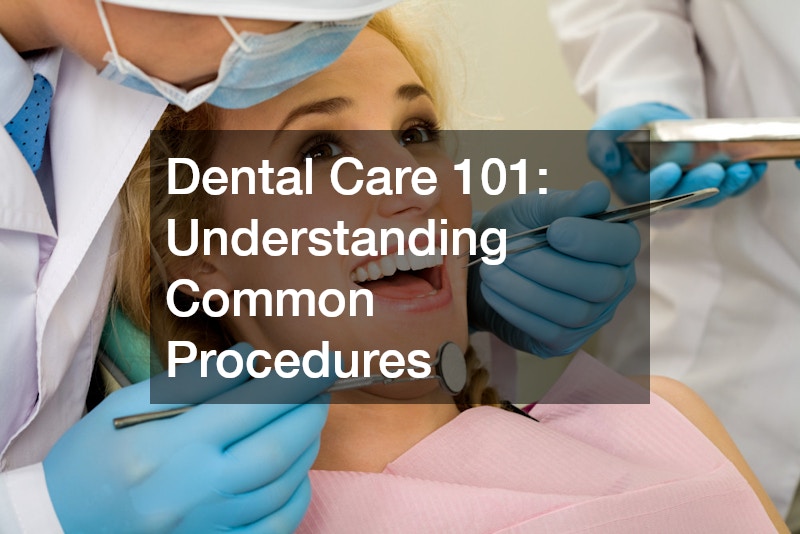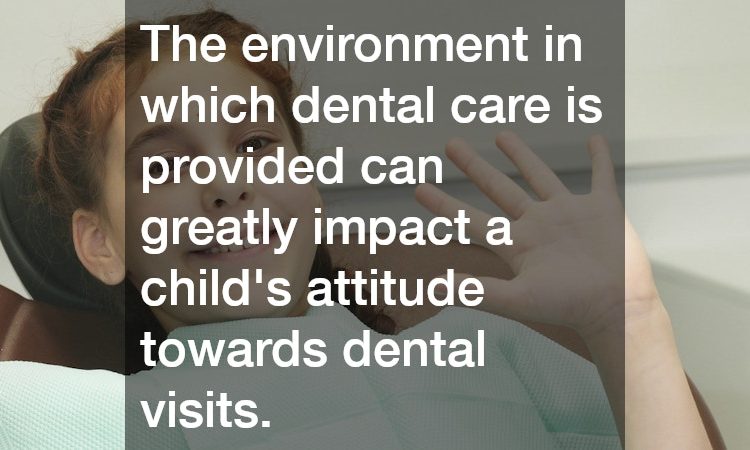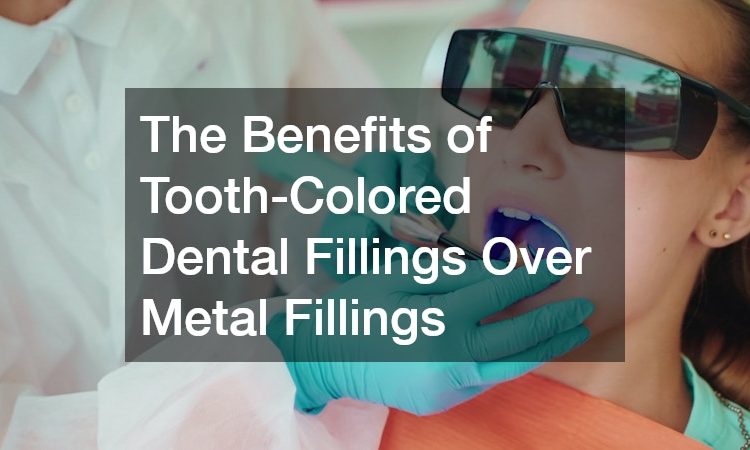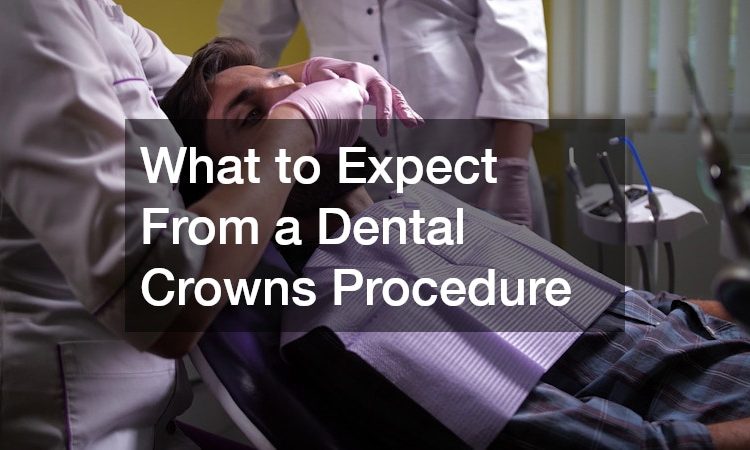It is important to maintain good dental health. This aspect of well-being is often neglected until problems arise. Maintaining good oral hygiene and receiving regular dental care is essential for a healthy body and mouth. Local dental services are essential for providing emergency, cosmetic, periodontal, and preventive dental care. This article will provide a detailed overview of the most common dental services and their importance in maintaining good oral health. It will also explain how to recognise them when you are in need.
Common Dental Services
Dental services include a variety of procedures aimed at diagnosing and treating dental issues. Dental services include cleanings and exams as well as restorative procedures such as root canal therapy and fillings. Other services may include periodontal treatments, including scaling and planing. Cosmetic procedures, like teeth whitening, dental veneers and dental crowns, are also available. It is important to understand these services in order to prioritise dental health.
Importance of Early Detection
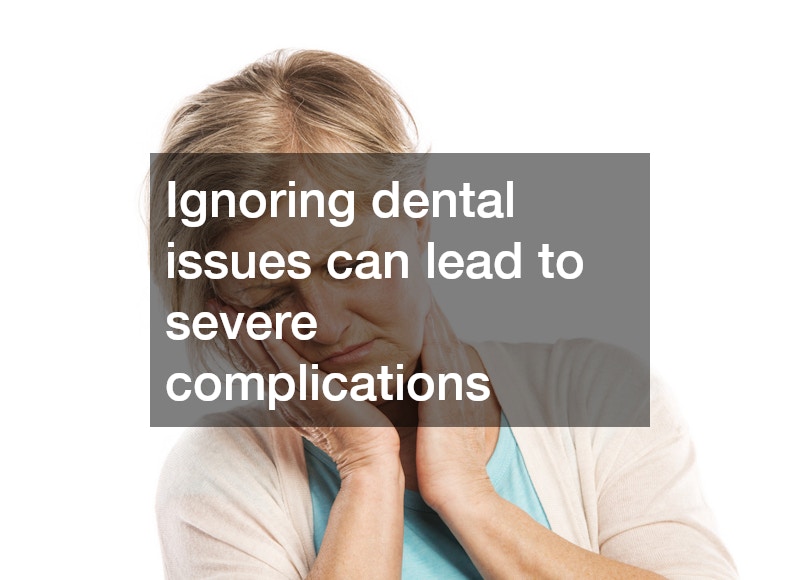
Early detection of dental problems and their treatment is crucial to preventing oral health issues from progressing. Dentists can identify potential problems at an early stage, which allows for treatment and intervention. Ignoring dental issues can lead to severe complications such as tooth loss, gum diseases, and systemic health problems. Being proactive with dental care, and getting prompt treatment when necessary, can have a significant impact on one’s overall health.
Preventive Services
Cleaning services and other preventative maintenance are essential to good oral hygiene. It allows you to catch problems early and save time, money and pain. You should do a few things regularly to maintain good oral health.
Dental Cleanings
For maintaining good oral health, regular dental cleanings are recommended at least every six months. Cleaning services remove plaque, tartar and stains, which can lead to cavities and gum diseases. Dental cleanings can be required more often based on oral health, lifestyle, and risk factors like diabetes or smoking. Plaque or tartar accumulation, persistent bad breath and gum inflammation are all signs that you need dental cleaning. If you have kids, make sure you visit a child’s dentist.
Dental Exams
A dental exam is a comprehensive evaluation of the oral health of a person by a dentist or a dental hygienist. These exams assess the soft tissues, teeth, tongue and gums. A dental exam can include a visual inspection, dental radiographs, periodontal probing and oral cancer screening. You should schedule a dentist exam if you experience tooth pain, gum swelling or bleeding, or notice changes to your mouth or teeth. If you’re looking to stay close to home, consider working with a local dentist.
Dental Sealants
To prevent cavities, dental sealants are thin plastic films that are applied to the chewing surfaces (molars or premolars). Sealants protect the enamel against acid and plaque attacks. They are especially useful in areas where regular brushing and dental flossing is difficult. Dental sealants are often recommended for children and teens, who are more susceptible to cavities because of their oral hygiene habits as well as the deep grooves or pits on their molars. Dental sealants may be beneficial if you have a history with cavities on your back teeth or if there are deep grooves and fissures in the chewing surfaces.
Restorative Services
People who have already damaged teeth can benefit from restoration services. Restorative dentistry can help people who have damaged teeth to feel confident about their smiles again. Restorative dentistry includes a variety of services.
Fillings
Fillings can be used to restore teeth damaged by trauma or decay. Dental fillings come in different types, such as amalgam (silver), tooth-coloured composite, gold and ceramic. Fillings are indicated by tooth pain, sensitivity, holes or pits visible in the teeth and rough or chipped surfaces. Filling cavities as soon as possible is crucial to preventing further decay and preserving the structure and functionality of the affected teeth.
Crowns and Bridges
Crowns and bridges can be used to replace or repair damaged teeth. Crowns, or caps, are used to cover a tooth that is damaged, decayed, or has lost its strength and shape. Bridges replace missing teeth using artificial teeth (pontics), which are attached to natural teeth or dental implants. Crowns and bridges are needed for severely decayed, fractured, or large cavities, which cannot be filled by a conventional filling. They may also be required to replace missing teeth or teeth with severe decay. Crowns and bridges may be needed if you have visible cracks or breaks in your teeth, or if you are having difficulty speaking or chewing.
Root Canal Therapy
The root canal treatment is also called endodontic therapy. It can be used to save teeth that have been severely damaged or infected. This procedure involves removing the inflamed or infected pulp (the soft tissues inside the teeth) and cleaning, disinfecting, and sealing the inside of the teeth. You may need a root-canal treatment if you have a severe toothache or sensitivity to cold or hot temperatures. There could also be swelling in your gums or tenderness, or a darkening of the tooth. Early root canal treatment can relieve pain, stop the spread of infection and preserve natural tooth structure.
Periodontal Services
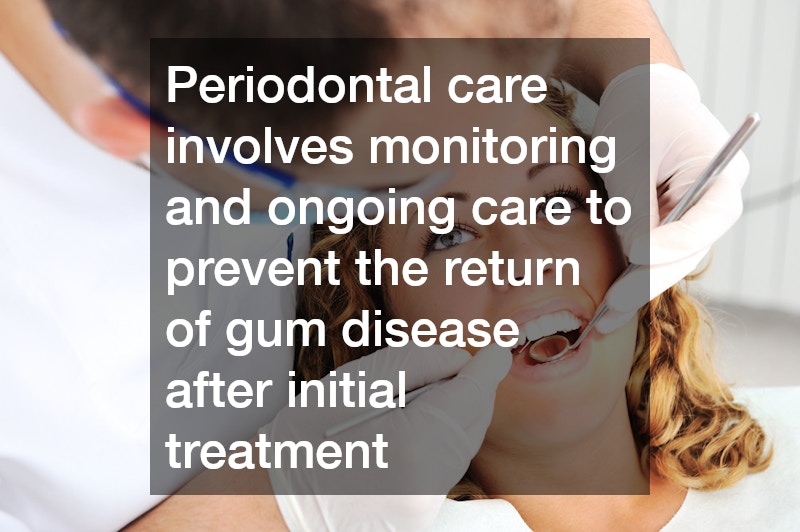
Root Planing and Scaling
The non-surgical treatment for gum disease, or periodontitis, is called scaling and root planing. This procedure removes plaque, tartar and bacterial toxin from the surface of the roots and teeth. The root surfaces are then smoothed in order to promote healing and avoid bacterial reattachment. Scaling and root planing is required for gum inflammation (gingivitis), the formation of periodontal pockets between teeth and gums, and bone loss surrounding the teeth. You may require scaling and root planning if you have swollen or red gums or bleeding gums.
Periodontal Surgery
In more advanced cases of periodontal disease, scaling and root planning alone may not be enough to treat the condition. This surgical procedure aims to improve the health and appearance of gums by reducing pocket depths and regenerating lost soft tissue and bone. Periodontal surgery is often required for severe periodontitis and gum recession. It can also be necessary to support the teeth with inadequate bone. Deep periodontal pockets and loose or mobile teeth are signs that you might need periodontal surgical treatment.
Periodontal Care
Periodontal care involves monitoring and ongoing care to prevent the return of gum disease after initial treatment. This maintenance program includes periodontal evaluations and oral hygiene instruction tailored to your needs. Periodontal maintenance may be required more frequently depending on factors such as the severity of the gum disease, the individual’s risk factors and the results of previous treatments. Periodontal maintenance may be needed if you have a history or gum disease, deep pockets and difficulty with oral hygiene.
Cosmetic Services
Teeth Whitening
The purpose of dental teeth whitening is to remove discolouration and stains from the teeth. You can choose from a variety of teeth-whitening options, such as professional in-office treatments, at-home kits and over-the-counter whitening products. Individuals with discoloured or stained teeth can benefit from teeth whitening. This may be due to age, diet, smoking or medications. Yellow or stained teeth are signs that you might want to whiten your teeth. You may also be unhappy with the look of your smile and desire a more vibrant and youthful smile.
Dental Veneers
Dental veneers are thin shells of porcelain or composite resin bonded directly to the front surface of teeth to improve appearance. Veneers are used to fix a variety of cosmetic imperfections such as chipped, cracked or stained teeth as well as gaps in between teeth. Dental veneers are needed when there is an aesthetic concern about the shape, size, colour or alignment of teeth. Other cosmetic treatments cannot address these concerns. Dental veneers can be beneficial if you have visible imperfections in your teeth, are self-conscious about your smile and want a uniformed and attractive smile.
Orthodontic Treatments
The goal of orthodontic treatment is to correct malocclusions (misaligned or crooked teeth) and straighten them. Orthodontic treatments include braces and orthodontic appliances. Orthodontic treatment is required for crowded teeth or gaps between teeth. Other conditions that require orthodontic treatment are overbites and underbites. You may require orthodontic treatment if you have difficulty speaking or chewing, or if your jaw is in pain.
Emergency Dental Services
Toothache Relief
The most common dental emergency is toothache, which causes pain in the jaw and teeth. Toothaches can be caused by dental decay, fractured teeth, gum disease or wisdom teeth that are impacted. It is important to seek immediate relief from severe tooth pain and swelling. Emergency toothache treatment options include pain relievers over-the counter, topical numbing creams, warm salted water rinses and prescription medication for infection or inflammation. Visit doctors’ offices.
Dental Trauma Management
Dental trauma is the term used to describe injuries to teeth, gums or surrounding tissues that are caused by accidents, sports injuries or other traumatic incidents. Dental trauma can include tooth fractures as well as avulsions and luxations. It is important to act quickly to prevent further injury in the event of dental trauma. You may need to rinse your mouth with warm, saline water, apply pressure to stop bleeding and seek immediate dental treatment.
Crown or Filling Lost
It can be distressing to lose a crown or filling, because it exposes your tooth to possible damage, sensitivity and infection. The most common causes of missing fillings and crowns are decay, traumas, wear and tears, and incorrect fit or placement. It is important to act quickly when a crown or filling is lost to avoid complications. Delaying treatment after a filling or crown is lost can lead to further damage or decay to the tooth. It may also cause pain or sensitivity.
In Closing
Understanding common dental services, and knowing when to use them, is crucial for optimal oral health. Each dental service, from preventive care through to emergency treatment, plays an important role in maintaining the health, function and aesthetics for the teeth and gums. A comprehensive dental care program includes regular dental checkups, oral hygiene, and treatment of dental problems. Prioritising dental care and getting timely treatment when necessary can help individuals maintain a beautiful, healthy smile for many years.
